Lately, I’ve noticed that colour and Quebec seem to go hand in hand. From the Claude Tousignant retrospective last year and the Francine Savard show currently at the MAC, colour has been the subject of objective consideration – not being used as a means to enliven a work of art but as a way to express ideas about the creation of art. The works of architect/artist Rodney LaTourelle and multimedia artist and performer Matthew Biederman are no exception. The moment you walk into the Centre de design de l’Université du Québec À Montréal (UQAM) space, your eyes grow wide with the vibrancy of the colours in the room.
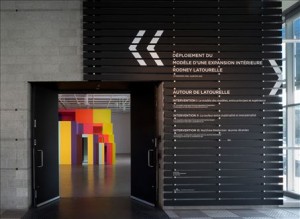
LaTourelle’s giant architectural study/sculpture, Model for Inner Expansion, dominates the space. Comprised of four open rooms painted with seven bands of colour (referencing both Newton’s colour spectrum and the seven chakras), which vary in thickness, the colourful object is an interactive experience of space that encourages the viewer to walk through and reconsider colour’s role in design.
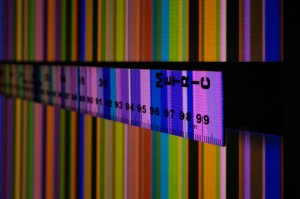
Alongside, Matthew Biederman’s pieces, part of his [un]limited color series, serve as the perfect complement to LaTourelle. The Chicago-born Montreal-based artist similarly provokes the viewer to reconsider conceptions of colour. Biederman projects colours by means of a generative software onto a cone and onto rulers (in Deforming a Cone and Iterated Color Field, Sorted and Measured Three Times, respectively), questioning chromatic perception and measurement at the threshold of technology.
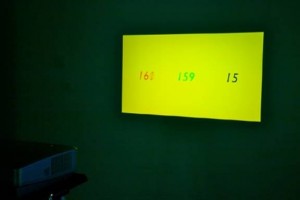
In R+G+B, a screen full of color, not unlike that of a blank computer screen, three numbers appear on screen, changing as the colour changes. These numbers represent the computer configuration of colour divided into red, green and blue. With the advent of technology, the identity and complexity of colour comes into question. Colours are no longer pure, but mathematical recipes of red, green and blue. The entire experience at the Centre de design de l’UQAM, curated by Design Director and artist Angela Grauerholz, challenges the viewer to reconsider the representation of colour.
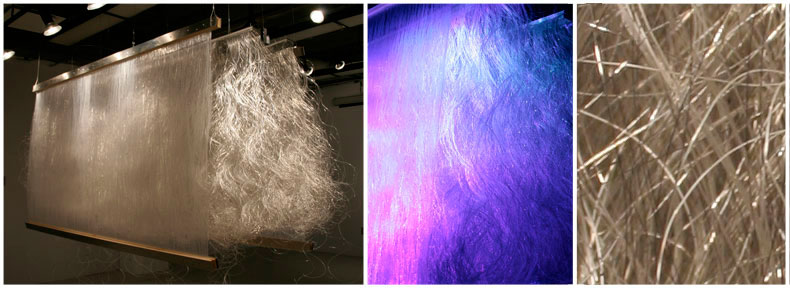
Similarly challenging the viewer to reconsider representation, is Sri-Lanka-born Montreal-based multimedia artist Pavitra Wickramasinghe. Her one-room installation, Refusing to make a scene, at Galerie B-312 (located in the Belgo Building, the mecca of contemporary art galleries in Montreal) makes a very powerful scene. Viewed from a corner entrance, a screen/sculpture hangs from the ceiling, shimmering with projected images. These images get lost through the frayed mass of plastic fibers leading to the room’s back corner. Noises echo from this back space where three delicately hand-drawn and constructed miniature theatre stages (reminiscent of the 18th century German tradition of miniature theatre dioramas) capture the imagination. Each is animated, either by motorized movement or changing colour, a delicate little world to be observed. Walking back out, I realized that the projections, lost through the screen/sculpture, were actually fragmented details of these theatres.
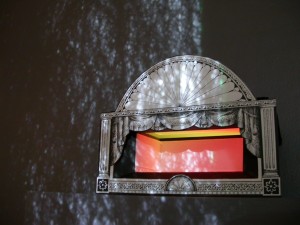
Wickramasinghe creates an experience with her work. She considers the loss and mutation of experiences, artwork and objects through diffusion and representation. The three little theatres, such precious creations, do not translate into the projection of their details. However, the projection is an aesthetic experience in its own right. And I am humbled by the ideas this artist puts forward: just as video and digital media can never replace their original experience-able subjects (although all manners of experience are equally valid and contribute new ideas), an art review can never replace the experience of the art itself. How’s that for rethinking representation?





